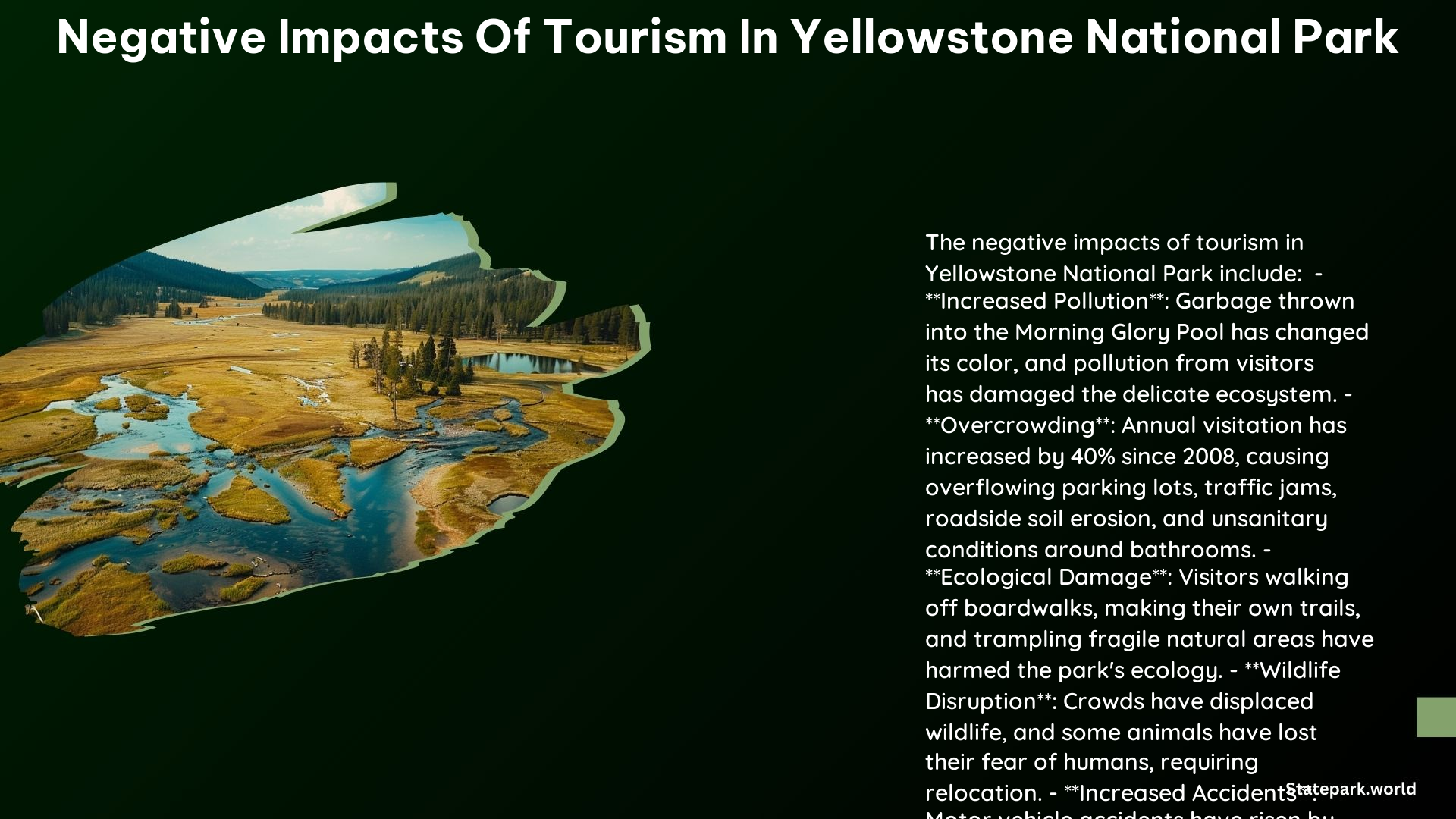The surge in visitors to Yellowstone National Park has led to a range of negative impacts, from overcrowding and infrastructure strains to ecological damage and a decline in the visitor experience. As the annual visitation has increased by nearly 40% since 2008, the park is facing significant challenges in balancing the needs of conservation and public access.
Overcrowding and Infrastructure Strains
The influx of visitors has put a significant strain on the park’s infrastructure, leading to several issues:
- Overflowing parking lots and traffic jams, especially during peak seasons
- Unsanitary conditions around bathrooms due to the high volume of use
- Increased motor vehicle accidents, ambulance use, and search and rescue efforts
Ecological Damage

The growing number of visitors has also taken a toll on the park’s delicate ecosystem:
- Trampled vegetation and increased erosion along popular trails
- Human waste issues, leading to concerns about water quality and the spread of diseases
- Disruption of wildlife habitats and the loss of animals’ fear of humans, leading to the need for relocation
Impact on Wildlife
The presence of large numbers of visitors has had a significant impact on the park’s wildlife:
- Displacement of animals from their natural habitats
- “Bear jams,” where traffic congestion occurs due to people stopping to view bears and other wildlife
- Increased risk of human-wildlife conflicts, as animals lose their fear of humans
Decline in Visitor Experience
The overcrowding and infrastructure issues have also led to a decline in the overall visitor experience:
- Long wait times and crowded trails, diminishing the sense of wilderness and tranquility
- Reduced opportunities for visitors to connect with the natural environment
- Frustration and dissatisfaction among visitors, leading to a negative perception of the park
Economic Concerns
While tourism generates significant economic benefits for the region, the costs of managing the large number of visitors and mitigating the negative impacts are substantial and often underfunded:
- Increased maintenance and repair costs for park infrastructure
- Higher staffing requirements to manage the crowds and address safety concerns
- Potential long-term damage to the park’s natural resources, which could impact future visitation and revenue
Management Challenges
Park management is struggling to find a balance between preserving the park’s natural resources and accommodating the growing number of visitors. Discussions are underway about implementing measures such as:
- Shuttle buses to reduce the number of personal vehicles
- Reservation systems to control visitor access
- Restrictions on the number of visitors allowed in certain areas
Addressing the negative impacts of tourism in Yellowstone National Park will require a comprehensive and collaborative approach, involving park management, local communities, and visitors themselves. By finding ways to balance conservation and public access, the park can continue to be a cherished natural wonder for generations to come.
References:
– Wilkinson, T. (2022). Is Yellowstone Tourism Promotion Helping Or Hurting The Protection Of Wild Places and Wildlife? Mountain Journal.
– Anzelmo, J. (2017). How A Surge in Visitors Is Overwhelming America’s National Parks. Yale Environment 360.
– Stephens, G. (n.d.). The truth about tourism in Yellowstone National Park. Rough Guides.
– National Park Service. (2022). Tourism to Yellowstone creates $834 million in economic benefits. National Park Service.
– National Park Service. (2024). Visitor Use Management – Yellowstone National Park. National Park Service.
